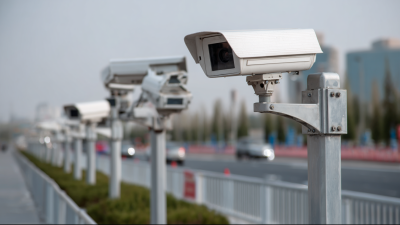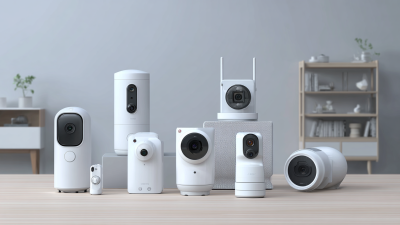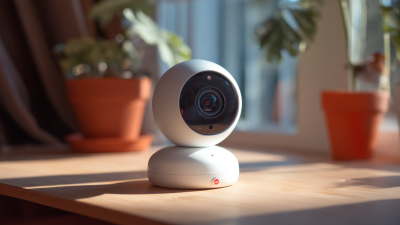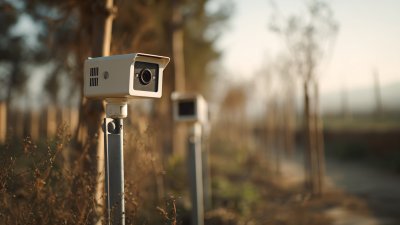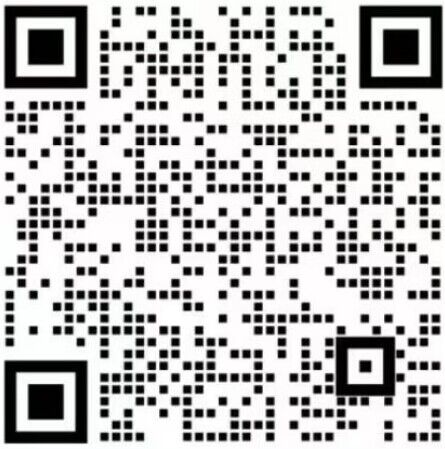
The advancement of technology has revolutionized various industries, and building inspections are no exception. Among the most significant innovations in this field is the use of the Thermal Camera, a tool that has proved indispensable for identifying a range of structural issues. This introduction explores the latest advances in Thermal Camera technology, highlighting how these innovations enhance the effectiveness of building inspections. By providing accurate thermal readings, these cameras enable inspectors to detect hidden problems such as insulation inefficiencies, moisture intrusion, and electrical hotspots that are often invisible to the naked eye.

The integration of advanced features such as improved resolution, real-time image processing, and user-friendly interfaces has further transformed the efficiency of thermal imaging in building assessments. As we delve into this topic, we will examine the capabilities and benefits of modern Thermal Cameras, demonstrating their critical role in ensuring safety, energy efficiency, and long-term integrity of buildings.
Recent advancements in thermal imaging sensors have significantly enhanced the effectiveness of building inspections. The thermal camera market is projected to grow substantially, expected to reach $8.11 billion by 2033, up from $4.29 billion in 2024, with a remarkable CAGR of 7.32% from 2025 to 2033. These figures reflect the increasing reliance on thermal imaging technology across various sectors, including aerospace, healthcare, and industrial applications, highlighting its critical role in ensuring safety and efficiency in building inspections.

Innovative partnerships and technologies are paving the way for enhanced thermal imaging capabilities. For instance, a strategic collaboration has been announced to develop advanced optical thermal sensors featuring edge AI, which will not only improve detection accuracy but also expand the range of applications in the construction and maintenance industries. Additionally, research has shown that drone-based thermal imaging can optimize monitored environments, demonstrating the versatility and utility of these advanced imaging systems in real-world scenarios. As the thermal imaging sector continues to evolve, these innovations position it as a vital tool for effective building inspections and beyond.
The integration of AI technologies with thermal cameras is revolutionizing the way building inspections are conducted. By leveraging machine learning algorithms and advanced image processing, AI enhances the interpretation of thermal images, allowing for quick and accurate identification of potential issues like heat loss, moisture infiltration, and electrical failures. This combination not only increases the efficiency of inspections but also reduces the likelihood of human error, ensuring that all critical areas are thoroughly evaluated.
Tips for effective use of thermal cameras in building inspections include ensuring that the area is not affected by external heat sources, such as direct sunlight or heating elements, which can skew results. Additionally, maintaining the thermal camera’s calibration is essential for accurate readings. Inspectors should also be trained in both thermal imaging technology and the principles of building science to better correlate thermal data with building conditions. This knowledge enables them to provide clients with comprehensive reports that are actionable and clear.
As the demand for energy efficiency and sustainable building practices grows, the synergy between AI and thermal imaging becomes increasingly relevant. This technology not only enhances routine inspections but also aids in predictive maintenance, identifying problems before they escalate into costly repairs. Integrating these advanced tools into building inspection workflows significantly elevates the standards of safety and sustainability in property management.

In recent years, the demand for thermal cameras in building inspections has surged, leading to significant advancements in their technology. A comparative analysis reveals that while high-end thermal cameras often boast superior resolution and sensitivity, the cost of these devices can be prohibitive. A report by MarketsandMarkets indicates that the thermal imaging market is projected to reach $3.88 billion by 2025, growing at a CAGR of 6.8%. This growth suggests that manufacturers are likely to focus on enhancing performance while keeping prices competitive.
When evaluating cost versus performance, entry-level thermal cameras may provide sufficient functionality for basic building inspections, often priced between $200 to $1,000. However, these models typically lack the detailed imaging quality found in premium options, which can range from $1,500 to over $10,000. According to a study by Frost & Sullivan, cameras with higher thermal resolution (increased pixel counts) can detect even minor thermal anomalies, which is crucial for identifying insulation defects or moisture issues.
Thus, though the upfront cost may be higher, investing in advanced thermal technology can lead to better long-term savings through efficient energy management and reduced repair costs, ultimately enhancing the effectiveness of building inspections.
Thermal imaging technology has significantly transformed the landscape of building maintenance, allowing professionals to identify issues that are otherwise invisible to the naked eye. One of the best practices for utilizing thermal imaging is to conduct regular inspections, particularly in buildings with complex systems or those that are aging. Scheduling these inspections during times of heightened activity can help capture thermal patterns associated with occupant behavior, energy usage, and environmental changes, leading to more accurate assessments of potential problems.
Another essential practice is to ensure proper calibration and training for personnel using thermal cameras. Understanding how to interpret thermal images is crucial; misinterpretation can lead to unnecessary repairs or overlooked issues. Additionally, pairing thermal imaging with other diagnostic methods, such as moisture meters or air quality sensors, can enhance overall inspection accuracy. This multi-faceted approach not only promotes proactive maintenance but also optimizes energy efficiency and occupant comfort within buildings.
This bar chart illustrates the key specifications of the latest thermal camera technology used in building inspections. It highlights advancements in resolution, temperature range, battery life, weight, and cost, which are critical for effective building maintenance and inspections.
Recent advancements in thermal camera technology are poised to significantly enhance building inspections, driven by ongoing innovations and increasing market demand. According to forecasts, the global thermal camera market is expected to reach $2.9625 billion by 2033, with a stable compound annual growth rate (CAGR) of 3.1% from 2025. This growth highlights the rising importance of thermal imaging as a key tool in identifying energy inefficiencies, structural defects, and moisture leakage in buildings.
Moreover, the application of ultrasonic infrared thermal imaging technology is rapidly gaining traction due to its unique advantages, such as selective heating and the ability to detect complex crack defects non-invasively. The increasing integration of such advanced technologies in building inspections is reflected in the expansion of relevant sectors. Specifically, the market for thermal ranges is projected to grow from $1 billion in 2024 to $25.4 billion by 2033, demonstrating a remarkable CAGR of 10.9%. As these technologies continue to evolve, the future of building inspections promises improved safety, accuracy, and efficiency.
| Feature | Current Technology | Future Trends |
|---|---|---|
| Image Resolution | 320 x 240 pixels | 640 x 480 pixels and higher |
| Thermal Sensitivity | 0.1°C | 0.05°C and improved |
| Data Storage | Limited on-device storage | Cloud-based storage solutions |
| User Interface | Basic touchscreen | AI-enhanced interactive displays |
| Integration with Software | Standalone applications | Seamless integration with building management systems |

